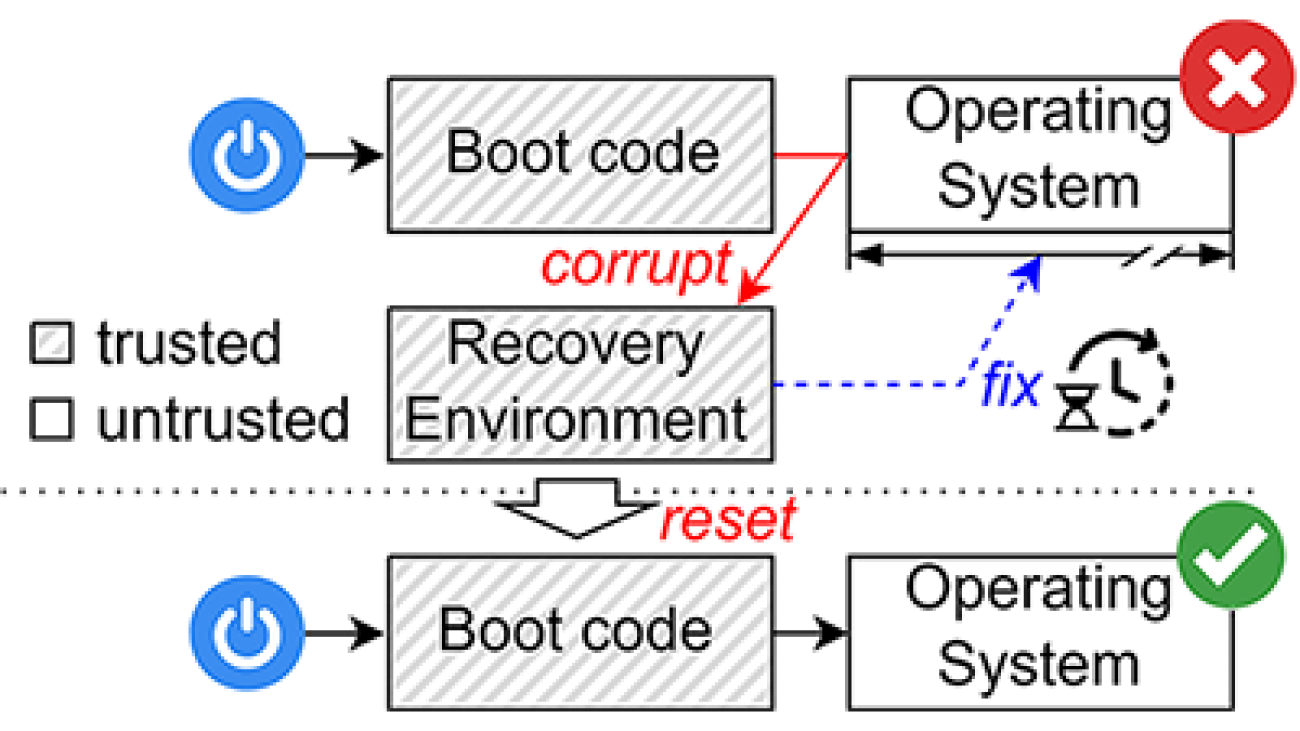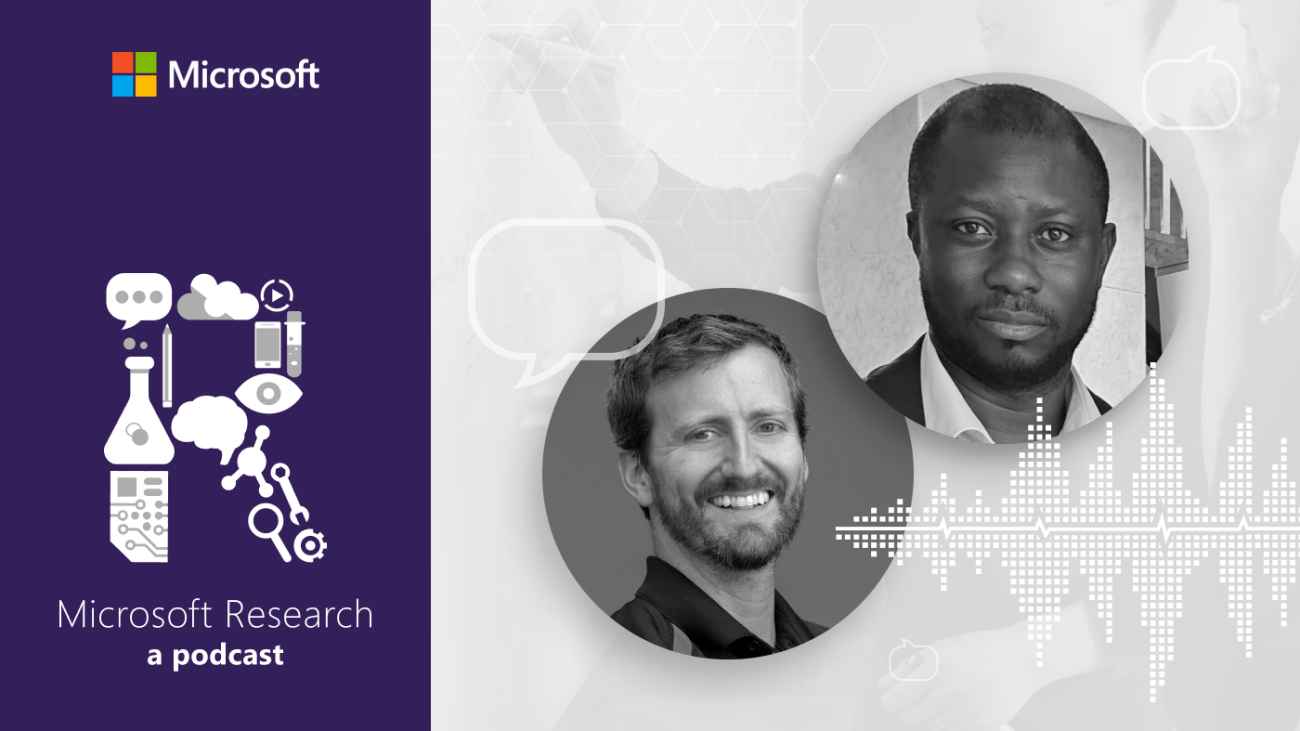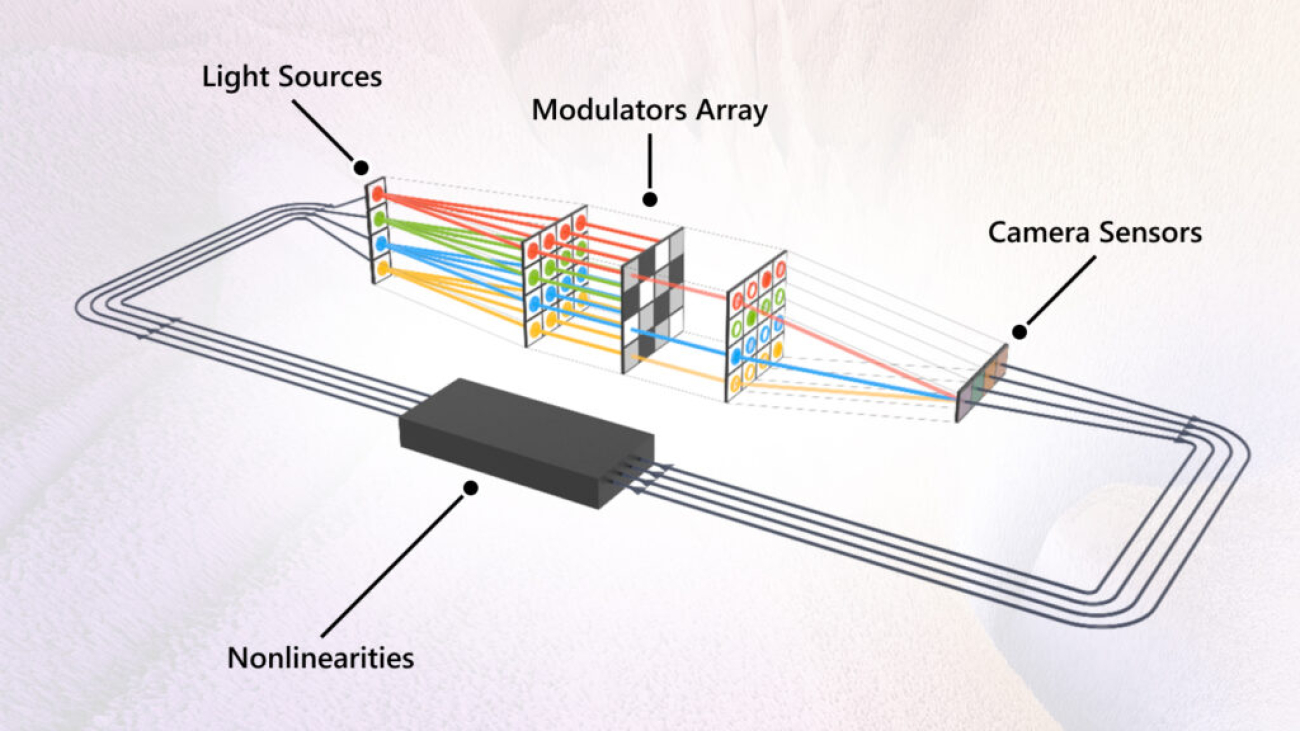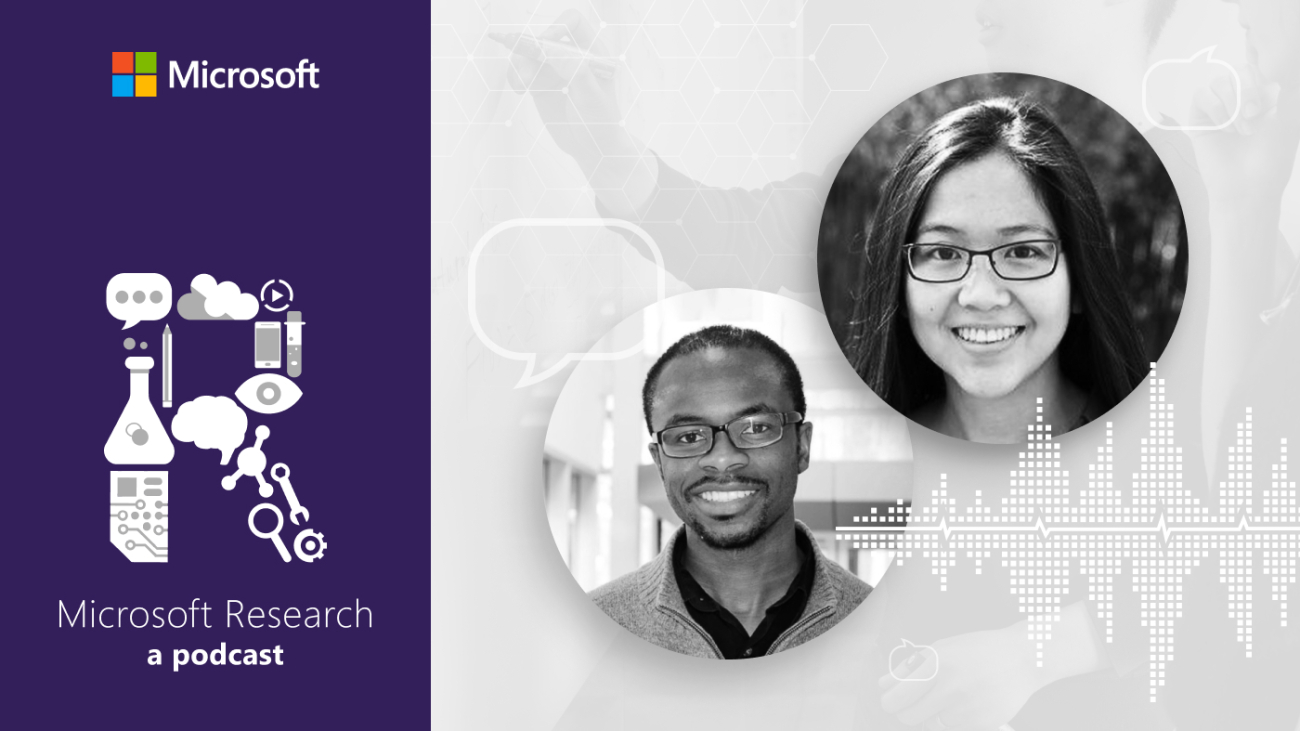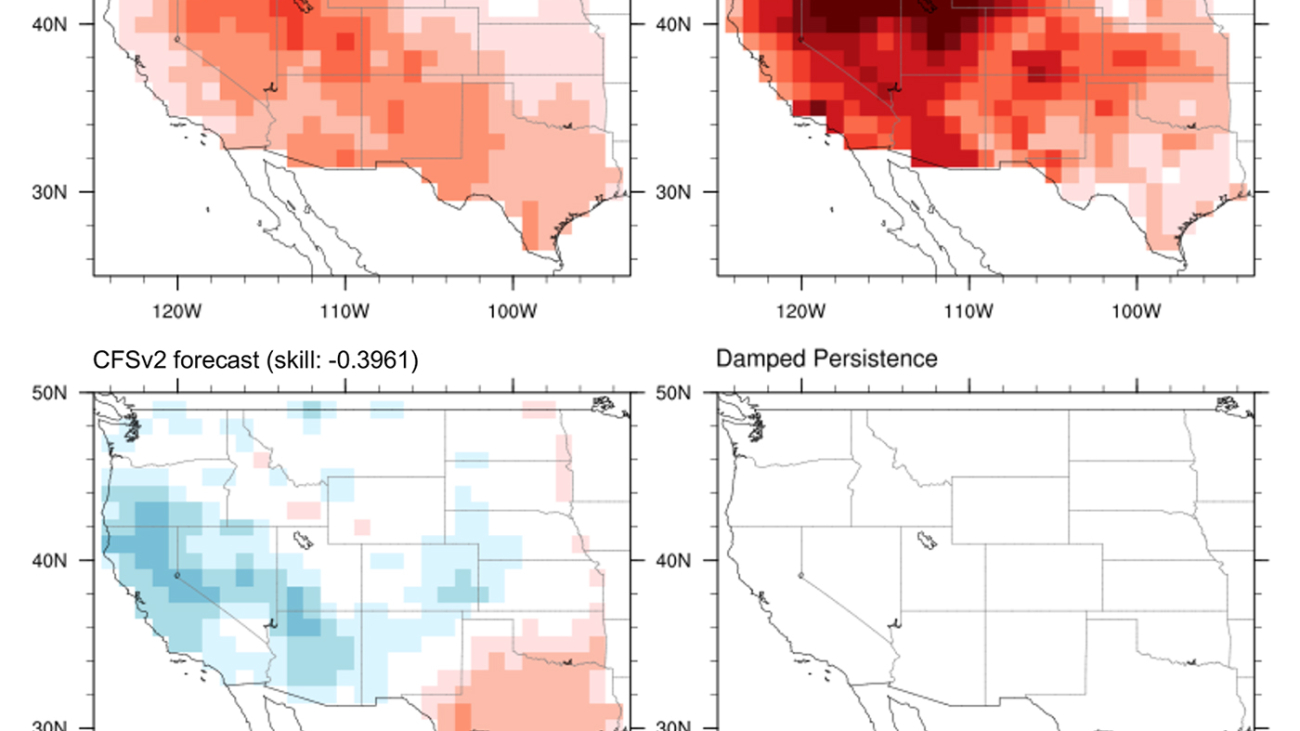Today I’m talking to Dr. Bichlien Nguyen, a Principal Researcher at Microsoft Research, and Dr. David Kwabi, an Assistant Professor of Mechanical Engineering at the University of Michigan. Bichlien and David are collaborating on a fascinating project under the umbrella of the Microsoft Climate Research Initiative that brings organic chemistry and machine learning together to discover new forms of renewable energy storage. Before we unpack the “computational design and characterization of organic electrolytes for flow batteries and carbon capture,” let’s meet our collaborators.
Bichlien, I’ll start with you. Give us a bit more detail on what you do at Microsoft Research and the broader scope and mission of the Microsoft Climate Research Initiative.
BICHLIEN NGUYEN: Thanks so much, Gretchen, for the introduction. Um, so I guess I’ll start with my background. I have a background in organic electric chemistry, so it’s quite fitting, and as a researcher at Microsoft, really, it’s my job, uh, to come up with the newest technologies and keep abreast of what is happening around me so that I can actually, uh, fuse those different technology streams together and create something that’s, um, really valuable. And so as part of that, uh, the Microsoft Climate Research Initiative was really where a group of researchers came together and said, “How can we use the resources, the computational resources, and expertise at Microsoft to enable new technologies that will allow us to get to carbon negative by the year 2050? How can we do that?” And that, you know, as part of that, um, I just want to throw out that the Microsoft Climate Research Initiative really is focusing on three pillars, right. The three pillars are being carbon accounting, because if you don’t know how much carbon is in the atmosphere, you can’t really, uh, do much to remedy it, right, if you don’t know what’s there. The other one is climate resilience. So how do people get affected by climate change, and how do we overcome that, and how can we help that with technology? And then the third is materials engineering, where, that’s where I sit in the Microsoft Climate Research Initiative, and that’s more of how do we either develop technologies that, um, are used to capture and store carbon, uh, or are used to enable the green energy transition?
HUIZINGA: So do you find yourself spread across those three? You say the last one is really where your focus is, but do you dip your toe in the other areas, as well?
NGUYEN: I love dipping my toe in all the areas because I think they’re all important, right? They’re all important. We have to really understand what the environmental impacts of all the materials, for example, that we’re making are. I mean, it’s so … so carbon accounting is really important. Environmental accounting is very important. Um, and then people are the ones that form the core, right? Why are we, do … why do we do what we do? It’s because we want to make sure that we can enable people and solve their problems.
HUIZINGA: Yeah, when you talk about carbon accounting and why you’re doing it, it makes me think about when you have to go on a diet and the doctor says, “You have to get really honest about what you’re eating. Don’t, don’t fake it.” [LAUGHS] So, David, you’re a professor at the University of Michigan, and you run the eponymous Kwabi Lab there. Tell us about your work in general. What are your research interests? Who do you work with, and what excites you most about what you do?
DAVID KWABI: Yeah, happy to! Thank you for the introduction and, and for having me on, on here today. So, um, uh, so as you said, I run the Kwabi Lab here at the University of Michigan, and the sort of headline in terms of what we’re interested in doing is that we like to design and study batteries that can store lots of renewable electricity, uh, on the grid, so, so that’s kind of our mission. Um, that’s not quite all of what we do, but it’s, uh, it’s how I like to describe it. Um, and the motivation, of course, is … comes back to what Bichlien just mentioned, is this need for us to transition from carbon-intensive, uh, ways of producing energy to renewables. And the thing about renewables is that they’re intermittent, so solar and wind aren’t there all the time. You need to find a way to store all that energy and store it cheaply for us to really make, make a dent, um, in carbon emissions from energy production. So we work on, on building systems or energy storage systems that can meet that goal, that can accomplish that task.
HUIZINGA: Both of you talked about having larger teams that support the work you’re doing or collaborate with you two as collaborators. Do you want to talk about the size and scope of those teams or, um, you know, this collaboration across collaboration?
KWABI: Yeah, so I could start with that. So my group, like you said, we’re in the mechanical engineering department, so we really are, um, we call ourselves electric chemical engineers, and electric chemistry is the science of batteries, but it’s a science of lots of other things besides that, but the interesting thing about energy storage systems or batteries in general is that you need to build and put these systems together, but they’re made of lots of different materials. And so what we like to do in my group is build and put together these systems and then essentially figure out how they perform, right. Uh, try to explore performance limits as a function of different chemistries and system configurations and so on. But the hope then is that this can inform materials chemists and computationalists in terms of what materials we want to make next, sort of, so, so there’s a lot of need for collaboration and interdisciplinary knowledge to, to make progress here.
HUIZINGA: Yeah. Bichlien, how about you in terms of the umbrella that you’re under at Microsoft Research?
NGUYEN: There are so many different disciplines, um, within Microsoft Research, but also with the team that we’re working, you know, with David. So we have actually two other collaborators from two different, I guess, departments. There’s the chemical engineering department, which Bryan Goldsmith is part of, and Anne McNeil, I believe, is part of the chemistry department. And you know, for this particular project, on flow battery electrolytes for energy storage, um, we do need a multidisciplinary team, right? We, we need to go from the atomistic, you know, simulation level all the way to the full system level. And I think that’s, that’s where, you know, that’s important.
HUIZINGA: Now that we’re on the topic of this collaboration, let’s talk about how it came about. I like to call this “how I met your mother.” Um, what was the initial felt need for the project, and who called who and said, “Let’s do some research on renewable climate-friendly energy solutions?” Bichlien, why don’t you go ahead and take the lead on this?
NGUYEN: Yeah. Um, so I’m pretty sure what happened—and David, correct me if I’m wrong—
[LAUGHTER]
HUIZINGA: Pretty sure … !
NGUYEN: I’m pretty sure, but not 100 percent sure—is that, um, while we were formulating how to … uh, what, what topics we wanted to target for the Microsoft Climate Research Initiative, we began talking to many different universities as a way to learn from them, to see what areas of interest and what areas they think are, uh, really important for the future. And one of those universities was the University of Michigan, and I believe David was one of few PIs on that initial Teams meeting. And David gave, I believe … David, was it like a 10-minute presentation? Very quick, right? Um, but it sparked this moment of, “Wow, I think we could accelerate this.”
HUIZINGA: David, how do you remember it?
KWABI: Yeah, I think I remember it. [LAUGHS] This is so almost like a, like a marriage. Like, how did you guys meet? Um, and then, and then the stories have to align in some way or …
HUIZINGA: Yeah, who liked who first?
KWABI: Yeah, exactly. Um, but yeah, I think, I think that’s what I recall. So basically, I’m part of … here at the university, I’m part of this group called the Global CO2 Initiative, uh, which is basically, uh, an institute here at the university that convenes research related to CO2 capture, CO2 utilization, um, and I believe the Microsoft team set up a meeting with the Global CO2 Initiative, which I joined, uh, in my capacity as a member, and I gave a little 10-minute talk, which apparently was interesting enough for a second look, so, um, that, that’s how the collaboration started. There was a follow-up meeting after that, and here we are today.
HUIZINGA: Well, it sounds like you’re compelling, so let’s get into it, David. Now would be a good time to talk about, uh, more detail on this research. I won’t call it Flow Batteries for Dummies, but assume we’re not experts. So what are flow batteries, what problems do they solve, and how are you going after your big research goals methodologically?
KWABI: OK, so one way to think about flow batteries is to, to think first about pumped hydro storage is, is how I like to introduce it. So, so a flow battery is just like a battery, the, the sort of battery that you have in your cell phone or laptop computer or electric vehicle, but it’s a … it has a very different architecture. Um, and to explain that architecture, I like to talk about pumped hydro. So pumped hydro is I think a technology many of us probably appreciate or know about. You have two reservoirs that, that hold water—so upper and lower reservoirs—and when you have extra electricity, or, or excess electricity, you can pump water up a mountain, if you like, from one reservoir to another. And when you need that electricity, water just flows down, spins some turbines, and produces electricity. You’re turning gravitational potential energy into electrical energy, or electricity, is the idea. And the nice thing about pumped hydro, um, is that if you want to store more energy, you just need a bigger reservoir. So you just need more water essentially, um, in, in the two reservoirs to get to longer and longer durations of storage, um, and so then this is nice because more and more water is actually … is cheap. So the, the marginal cost of your … every stored, um, unit of energy is quite low. This isn’t really the case for the source of batteries we have in our cell phones and laptop computers. So if we’re talking about grid storage, you want something like this, something that decouples energy and power, so we have essentially a low cost per unit of electricity. So, so flow batteries essentially mimic pumped hydro because instead of turning gravitational potential energy into electricity, you’re actually changing or turning chemical potential energy, if you like, into electricity. So essentially what you’re doing is just storing energy in, um, in the form of electrons that are sort of attached to molecules. So you have an electron at a really high energy that is like flowing onto another molecule that has a low energy. That’s essentially the transformation that you’re trying to do in a, in a flow battery. But that’s the analogy I like to, I like to draw. It’s sort of a high- and low-reservation, uh, reservoirs you have. High and low chemical, uh, potential energy.
HUIZINGA: So what do these do better than the other batteries that you mentioned that we’re already using for energy storage?
KWABI: So the other batteries don’t have this decoupling. So in the flow battery, you have the, the energy being stored in these tanks, and the larger the tank, the more the energy. If you want to turn that energy into, uh, chemical energy into electricity, you, you, you run it through a reactor. So the reactor can stay the same size, but the tank gets bigger and bigger and you store more energy. In a laptop battery, you don’t have that. If you want more energy, you just want more battery, and that, the cost of that is the same. So there isn’t this big cost advantage, um, that comes from decoupling the energy capacity from the power capacity.
NGUYEN: David, would you, would you also say that, um, with, you know, redox organic flow batteries, you also kind of decouple the source, right, of the, the material, the battery material, so it’s no longer, for example, a rare earth metal or precious metal.
KWABI: Absolutely. So that’s, that’s then the thing. So when you … so you’ve got … you know, imagine these large systems, these giant tanks with, with molecules that store electricity. The question then is what molecules do you choose? Because if it’s like really expensive, then your electricity is also very expensive. Um, the particular type of battery we’re looking at uses organic molecules to store that electricity, and the hope is that these organic molecules can be made very cheaply from very abundant materials, and in the end, that means that this then translates to a really low cost of electricity.
HUIZINGA: Bichlien, I’m glad you brought that up because that is a great comparison in terms of the rare earth stuff, especially lithium mining right now is a huge cost, or tax, on the environment, and the more electric we have, the more lithium we need, so there’s other solutions that you guys are, are digging around for. Were you going to say something else, Bichlien?
NGUYEN: I was just going to say, I mean, another reason why, um, we thought David’s work was so interesting is because, you know, we’re looking at, um, energy, um, storage for renewables, and so to get to this green energy economy, we’ll need a ton of renewables, and then we’ll need a ton of ways to store the energy because renewables are, you know, they’re intermittent. I mean, sometimes the rain rains all the time, [LAUGHS] and sometimes it doesn’t. It’s really dry. Um, I don’t know why I say rain, but I assume … I probably …
HUIZINGA: Because you’re in Seattle, that’s why!
NGUYEN: That’s true. But like the sun shines; it doesn’t shine. Um, yeah, the wind blows, and sometimes it doesn’t.
HUIZINGA: Or doesn’t. Yeah. … Well, let’s talk about molecules, David, um, and getting a little bit more granular here, or maybe I should say atomic. You’re specifically looking for aqueous-soluble redox-active organic molecules, and you’ve noted that they’re really hard to find, um, these molecules that meet all the performance requirements for real-world applications. In other words, you have to swipe left a lot before you get to a good [LAUGHS] match, continuing with the marriage analogy. … So what are the properties necessary that you’re looking for, and why are they so hard to find?
KWABI: So the “aqueous soluble” just means soluble in water. You want the molecule to be able to dissolve into water at really high concentrations. So that’s one, um, property. You need it to last a really long time because the hope is that these flow battery installations are going to be there for decades. You need it to store electrons at the right energy. So, uh, I mentioned you have two tanks: one tank will store electrons at high energy; the other at low energy. So you need those energy levels to be set just right in a sense, so you want a high-voltage battery, essentially. You also want the molecule to be set that it doesn’t leak from one tank to the other through the reactor that’s in the middle of the two tanks, right. Otherwise, you’re essentially losing material, which is not, uh, desirable. And you want the molecule to be cheap. So that, that’s really important, obviously, because if we’re going to do this at, um, really large scale, and we want this to be low cost, that we want something that’s abundant and cheap. And finding a molecule that satisfies all of these requirements at the same time is really difficult. Um, you can find molecules that satisfy three or four or two, but finding something that hits all the, all the criteria is really hard, as is finding a good partner. [LAUGHS]
HUIZINGA: Well, and even in, in other areas, you hear the phrase cheap, fast, good—pick two, right? So, um, yeah, finding them is hard, but have you identified some or one, or I mean where are you on this search?
KWABI: Right now, the state-of-the-art charge-storing molecule, if you like, is based on a rare earth … rare element called vanadium. So the most developed flow batteries now use vanadium, um, to store electricity. But, uh, vanadium is pretty rare in the Earth’s crusts. It’s unclear if we start to scale this technology, um, to levels that would really make an impact on climate, it’s not clear there’s enough vanadium, uh, to, to do the job. So it fulfills a bunch of, a bunch of the criteria that I just mentioned, but not, not the cheap one, which is pretty important. We’re hoping, you know, with this project, that with organic molecules, we can find examples or particular compounds that really can fulfill all of these requirements, and, um, we’re excited because organic chemistry gives us, uh … there’s a wide design space with organic molecules, and you’re starting from abundant elements, and, you know, the hope is that we can really get to something that, that, you know, we can swipe left on … is it swipe left or right? I’m not sure.
NGUYEN: I have no idea.
HUIZINGA: Swipe left means …
[LAUGHTER]
HUIZINGA: I looked it up. I, I’ve been married for a really long time, so I did look it up, and it is left if you’re not interested and right if you are, apparently on Tinder, but, uh, not to beat that horse …
KWABI: You want to swipe right eventually.
HUIZINGA: Yes. Which leads me to, uh, Bichlien. What does machine learning have to do with natural sciences like organic chemistry? Why does computation play a role here, particularly generative models, for climate change science?
NGUYEN: Yeah so what, you know, the past decade or two, um, in computer science and machine learning have taught us is that ML is really good at pattern recognition, right, being able to, um, take complex datasets and pull out the most type … you know, relevant, uh, trends and information, and, and it’s good at classifying … you know, used as a classification tool. Uh, and what we know about nature is that nature is full of patterns, right. We see repeating patterns all the time in nature, at many different scales. And when we think, for example, of all of the combinations of carbons, carbon organic molecules, that you could make, you see around 1060; it’s estimated to be 1060. Um, and those are all connected somehow, you know, in this large, you know, space, this large, um, distribution. And we want to, for example, as David mentioned, we want to check the boxes on all these properties. So what is really powerful, we believe, is that generative models will allow us to sample this, this organic chemistry space and allow us to condition the outputs of these models on these properties that David wants to checkmark. And so in a way, it’s allowing us to do more efficient searching. And I like to think about it as like you’re trying to find a needle, right, in the ocean, and the ocean’s pretty vast; needles are really small. And instead of having the size of the ocean as your search space, maybe you have the size of a bathtub and so that we can narrow down the search space and then be able to test and validate some of the, the molecules that come out.
HUIZINGA: So do these models then eliminate a lot of the options, making the pool smaller? Is that how that works to make it a bathtub instead of an ocean?
NGUYEN: I, I wouldn’t say eliminates, but it definitely tells you where you should be … it helps focus where you’re searching.
HUIZINGA: Right, right, right. Well, David, you and I talked briefly and exchanged some email on “The Elements” song by Tom Lehrer, and it’s, it’s a guy who basically sings the entire periodic chart of the elements, really fast, to the piano. But at the end, he mentions the fact that there’s a lot that haven’t been discovered. There’s, there’s blanks in the chart. And so I wonder if, you know, this, this search for molecules, um, it just feels like is there just so much more out there to be discovered?
KWABI: I don’t know if there’s more elements to be discovered, per se, but certainly there’s ways of combining them in ways that produce …
HUIZINGA: Aaahhhhh …
KWABI: … new compounds or compounds with properties that, that we’re looking for, for example, in this project. So, um, that’s, I think, one of the things that’s really exciting about, uh, about this particular endeavor we’re, we’re, we’re engaged in. So, um, one of the ways that people have traditionally thought about finding new molecules for flow batteries is, you know, you go into the lab or you go online and order a chemical that you think is going to be promising [LAUGHS] … some people I know have done this, uh, myself included … but you, you order a chemical that you think is promising, you throw it in the flow battery, and then you figure out if it works or not, right. And if it doesn’t work, you move on to the next compound, or you, um …
NGUYEN: You tweak it!
KWABI: … if it does work, you publish it. Yeah, exactly—you tweak it, for example. Um, but one of the, one of the questions that we get to ask in this project is, well, rather than think about starting from a molecule and then deciding or figuring out whether it works, we, we actually start from the criteria that we’re looking for and then figure out if we can intelligently design, um, a molecule based on the criteria. Um, so it’s, it’s, uh, I think a more promising way of going about discovering new molecules. And, as Bichlien’s already alluded to, with organic chemistry, the possibilities are endless. We’ve seen this already in, like, the pharmaceutical industry for example, um, and lots of other industries where people think about, uh, this combinatorial problem of, how do I get the right structure, the right compound, that solves the problem of, you know, killing this virus or whatever it is. We’re hoping to do something similar for, uh, for flow batteries.
HUIZINGA: Yeah, in fact, as I mentioned at the very beginning of the show, you titled your proposal “The computational design and characterization of organic electrolytes for flow batteries,” so it’s kind of combining all of that together. David, sometimes research has surprising secondary uses. You start out looking for one thing and it turns out to be useful for something else. Talk about the dual purposes of your work, particularly how flow batteries both store energy and work as a sort of carbon capture version of the Ghostbusters’ Ecto-Containment Unit. [LAUGHS]
KWABI: Sure. Yeah, so this is where I sort of confess and say I wasn’t completely up front in the beginning when I said all we do is energy storage, but, um, another, um, application we’re very interested in is carbon capture in my group. And with regard to flow batteries, it turns out that you, you actually can take the same architecture that you use for a flow battery and actually use it to, to capture carbon, CO2 in particular. So the way this would work is, um, it turns out that some of the molecules that we’ve been talking about, some of the organic molecules, when you push an electron onto them—so you’re storing energy and you push an electron onto them—it turns out that some of these molecules also absorb hydrogen ions from water so those two processes sort of happen together. You push an electron onto the molecule, and then it picks up a hydrogen ion from water. Um, and if you remember anything about something from your chemistry classes in high school, that changes the pH of water. If you remove protons, uh, from water, that makes water more basic, or more alkaline. And alkaline electrolytes or alkaline water actually absorbs or reacts with CO2 to make bicarbonate. So that’s a chemical reaction that can serve as a mode, or a mechanism, for removing CO2 from, from the environment, so it could be air, or it could be, uh, flue gas or, you know, exhaust gas from a power plant. So imagine you, you run this process, you push the electron onto the molecule, you change the pH of the solution, you remove CO2 … that can then … you can actually concentrate that CO2 and then run the opposite reaction. So you pull the electron off the molecule; that then dumps protons back into solution, and then you can release all this pure CO2 all of a sudden. So, so now what you can do is take a flow battery that stores energy, but also, uh, use it to separate CO2, separate and concentrate CO2 from a, from a gaseous source. So this is, um, some work that we’ve been pursuing sort of in parallel with our work on energy storage, and the hope is that we can find molecules that, in principle, maybe could do both—could do the energy storage and also help with, uh, with CO2 separation.
HUIZINGA: Bichlien, is that part of the story that was attractive to Microsoft in terms of both storage for energy and getting rid of CO2 in the environment?
NGUYEN: Yeah, absolutely. Absolutely. Of course, the properties of, of, you know, both CO2 capture and the energy storage components are sometimes somewhat, uh—David, correct me if I’m wrong—kind of divergent. It’s, it’s hard to optimize for one and have the other one optimized, too. So it’s really a balance of, of things, and we’re targeting, just right now, for this project, our joint project, the, the energy storage aspect.
HUIZINGA: Yeah. On that note, and either one of you can take this, what do you do with it? I mean, when I, when I used the Ghostbusters’ Ecto-Containment Unit, I was being direct. I mean, you got to put it somewhere once you capture it, whether it’s storing it for good use or getting rid of it for bad use. So how are you managing that?
KWABI: Great question, so … Bichlien, were you going to … were you going to go?
NGUYEN: Oh, I mean, yeah, I was going to say that there are many ways, um, for I’ll call it CO2 abatement, um, once you have it. Um, there are people who are interested in storing it underground, so, uh, mineralizing it in basalt formations, rock formations. There are folks, um, like me, who are interested in, you know, developing new catalysts so that we can convert CO2 to different renewable feedstocks that can be used in different materials like different plastics, different, um, you know, essentially new fuels, things of that nature. And then there’s, you know, commercial applications for pure streams of CO2, as well. Uh, yeah, so I, I would say there’s a variety of things you can do with CO2.
HUIZINGA: What’s happening now? I mean, where does that generally … David we, I, I want to say, we talked about this issue, um, when we met before on some of the downsides of what’s current.
KWABI: Yeah, so currently, um, so there’s, as Bichlien has mentioned, there’s a number of things you could do with it. But right now, of all the sort of large projects that have been set up, large pilot plants for CO2 capture that have been set up, I think the main one is enhanced oil recovery, which is a little bit controversial, um, because what you’re doing with the CO2 there is you’re pumping it underground into an oil field that has become sort of less productive over time. And the goal there is to try to coax a little bit more oil, um, out of this field. So, so you pump the CO2 underground, it mixes in with the oil, and then you … that, that sort of comes back up to the surface, and you separate the CO2 from the oil, and you can, you can go off and, um, use the oil for whatever you use it for. So, so the economically attractive thing there is, there’s, uh, there’s, there’s going to be some sort of payoff. There’s a reason, a commercial incentive, for separating the CO2, uh, but of course the problem is you’re removing oil from the … you’re, you’re extracting more oil that’s going to end up with … in more CO2 emissions. So, um, there are, in principle, many potential options, but there aren’t very many that have both the sort of commercial … uh, where there’s sort of a commercial impact and there’s also sort of the scale to take care of the, you know, the gigatons of CO2 that we’re going to have to draw down, basically, so … .
NGUYEN: Yeah. And I, I think, I mean, you know, to David’s point, that’s true—that, that is what’s happening, you know, today because it provides value, right? The issue, I think, with CO2 capture and storage is that while there’s global utility, there’s no monetary value to it right now. Um, and so it makes it a challenge in terms of being able to industrialize, you know, industries to take care of the CO2. But I, I, I think, you know, as part of the MCRI initiative, you know, we’re very interested in both the carbon capture and the utilization aspect, um, and utilization would mean utilizing the CO2 in productive ways for long-term storage, so think about maybe using CO2, um, converting it electrochemically, for example, into, uh, different monomers. Those monomers maybe could be used in new plastics for long-term storage. Uh, maybe those are recyclable plastics. Maybe they’re plastics that are easily biodegradable. But, you know, one of the issues with using, or manufacturing, is there’s always going to be energy associated with manufacturing. And so that’s why we care a lot about renewables and, and the green energy transition. And, and that’s why, uh, you know, we’re collaborating with David and his team as, as part of that. It’s really full circle. We have to really think about it on a systems level, and the collaboration with David is, is one part of that system.
HUIZINGA: Well, that leads beautifully, and that’s probably an odd choice of words for this question, but it seems like “solving for X” in climate change is a no-lose proposition. It’s a good thing to do. But I always ask what could possibly go wrong, and in this case, I’m thinking about other solutions, some of which you’ve already mentioned, that had seemed environmentally friendly at first, but turned out to have unforeseen environmental impacts of their own. So even as you’re exploring new solutions to renewable energy sources, how are you making sure, or how are you mitigating, harming the environment while you’re trying to save it?
KWABI: That’s a great question. So it’s, it’s something that I think isn’t traditionally, at least in my field, isn’t traditionally sort of part of the “solve for X” when people are thinking about coming up with a new technology or new way of storing renewable electricity. So, you know, in our particular case, one of the things that’s really exciting about the project we’re working on is we’re looking at molecules that are fairly already quite ubiquitous, so, so they’re already being used in the food and textile industry, for example, derivatives of the molecules we’re using. So, you know, thinking about the materials you’re using and the synthetic routes that are necessary to produce them is sort of a pitfall that one can easily sort of get into if you don’t start thinking about this question at the very beginning, right? You might come up with a technology that’s, um, appealing and that works really well, performance-wise, but might not be very recyclable or might have some difficulties in terms of extraction and so on and so forth. So lithium-ion batteries, for example, come to mind. I think you were alluding to this earlier, that, you know, they’re a great technology for electric vehicles, but mining cobalt, extracting cobalt, comes with a lot of, um, just negative impacts in terms of child labor and so on in the Congo, et cetera. So how, how do we, you know, think about, you know, materials that don’t … that sort of avoid this? And I’ll, I’ll just highlight as one of our team members … so Anne McNeil, who’s in the chemistry department here, thinks quite a lot about this, and that’s appropriate because she’s sort of the synthetic chemist on the team. She’s the one who’s thinking a lot about, you know, given we have this molecule we want to make, what’s the most eco-friendly, sustainable route to making that molecule with materials that don’t require, you know, pillaging and polluting the earth to do it in a sense, right. And also materials … and also making it in a way that, you know, at end of life, it can be potentially recycled, right.
HUIZINGA: Right.
KWABI: So thinking about sustainable routes to making these molecules and potential sort of ways of recycling them are things that, um, we’re, we’re trying to, in some sense, to take into consideration. And by we, I mean Anne, specifically, is thinking quite seriously about …
NGUYEN: David … David, can I put words in your mouth?
KWABI: But, yeah. … Yeah, sure, go ahead.
NGUYEN: Um, you’re, you’re thinking of sustainability as being a first design principle for …
KWABI: Yes! I would take those words! Exactly.
NGUYEN: OK. [LAUGHS] Yeah, I mean, that’s really important. I, I agree and second what David said.
HUIZINGA: Bichlien, when we talked earlier, the term co-optimization came up, and I want to dig in here a little bit because whenever there’s a collaboration, each discipline can learn something from the other, but you can also learn about your own in the process. So what are some of the benefits you’ve experienced working across the sciences here for this project? Um, could you provide any specific insights or learnings from this project?
NGUYEN: I mean, I, I think maybe a naive … something that maybe seems naive is that we definitely have to work together in all three disciplines because what we’re also learning from David and Bryan is that there are different experimental and computational timelines that sometimes don’t agree, and sometimes do agree, and we really have to, uh, you know, work together in order to create a unified, I’m not going to call it a roadmap, but a unified research plan that works for everyone. For example, um, it takes much longer to run an experiment to synthesize a molecule … I, I think it takes much longer to synthesize a molecule than, for example, to run a, uh, flow cell, um, experiment. And then on the computational side, you could probably run it, you know, at night, on a weekend, you know, have it done relatively soon, generate molecules. And one of those that we’re, you know, understanding is that the human feedback and the computational feedback, um, it takes a lot of balancing to make sure that we’re on the same track.
HUIZINGA: What do you think, David?
KWABI: Yeah, I think that’s definitely accurate, um, figuring out how we can work together in a way that sort of acknowledges these timelines is really important. And I think … I’m a big believer in the fact that people from somewhat different backgrounds working together, the diversity of background, actually helps to bring about, you know, really great innovative solutions to things. And there’s various ways that this has sort of shown up in our, in own work, I think, and in our, in our discussions. Like, you know, we’re currently working on a particular sort of molecular structure for, uh, for a compound that we think will be promising at storing electricity, and the way we, we came about with it is that my, my group, you know, we ran a flow cell and we saw some data that seemed to suggest that the molecule was decomposing in a certain way, and then Anne’s group, or one of Anne’s students, proposed a mechanism for what might be happening. And then Jake, who works with Bichlien, also … and then thought about, “Well, what, what about this other structure?” So that sort of … and then that’s now informing some of the calculations that are going on, uh, with Bryan. So there’s really interesting synergies that show up just because there’s people working from, you know, coming from very different backgrounds. Like I’m a mechanical engineer who sort of likes to hang out with chemists and, um, there’s actual chemists and then there’s, you know …
NGUYEN: But, David, I think …
KWABI: … the people who do computation, and so on …
NGUYEN: I think you’re absolutely right here in terms of the overlap, too, right? Because in a, in a way, um, I’m an organic chemist by training, and I dabble in machine learning. You’re a mechanical engineer who dabbles in chemistry. Uh, Bryan’s a computational chemist who dabbles in flow cell works. Uh, Anne is, uh, you know, a purely synthetic chemist who dabbles in, you know, almost all of our aspects. Because we have overlap, we have lower, I’m going to call it an activation barrier, [LAUGHS] in terms of the language we speak. I think that is something that, you know, we have to speak the same language, um, so that we can understand each other. And sometimes that can be really challenging, but oftentimes, it’s, it’s not.
HUIZINGA: Yeah, David, all successful research projects begin in the mind and make their way to the market. Um, where does this research sit on that spectrum from lab to life, and how fast is it moving as far as you’re concerned?
KWABI: Do you mean the research, uh, in general or this project?
HUIZINGA: This project, specifically.
KWABI: OK, so I’d say we’re, we’re still quite early at this stage. So there’s a system of classification called Technology Readiness Level, and I would say we’re probably on the low end of the scale, I don’t know, maybe like a 1 or 2.
NGUYEN: We just started six months ago!
KWABI: We just started six months ago! So …
[LAUGHTER]
HUIZINGA: OK, that’s early. Wait, how many levels are there? If there’s 1 or 2, what’s the high end?
KWABI: I think we go up to an 8 or so, an 8 or a 9. Um, so, so we’re quite early; we just started. But the, the nice thing about this field is that things can move really quickly. So in a year or two, who knows where we’ll be? Maybe four or five, but things are still early. There’s a lot of fundamental research right now that’s happening …
HUIZINGA: Which is so cool.
KWABI: Proof of concept. Which is necessary, I think, before you can get to the, the point where you’re, um, you’re spinning out a company or, or moving up to larger scales.
HUIZINGA: Right. Which lives very comfortably in the academic world. Bichlien, Microsoft Research is sort of a third space where they allow for some horizon on that scale in terms of how long it’s going to take this to be something that could be financially viable for Microsoft. Is that just not a factor right now? It’s just like, let’s go, let’s solve this problem because this is super-important?
NGUYEN: I guess I’ll say that it takes roughly 20 years or so to get a proof of concept into market at an industrial scale. So, I’m … what I’m hoping that with this collaboration, and with others, is that we can shorten the time for discovery so that we understand the fundamentals and we have a good baseline of what we think can be achieved so that we can go to, for example, a pilot scale, like a test scale, outside of the laboratory, not full industrial scale, but just a pilot scale much faster than we would if we had to hand iterate every single molecule.
HUIZINGA: So the generative models play a huge role in that shortening of the time frame …
NGUYEN: Yes, yes. That’s what we …
KWABI: Yeah, I think …
NGUYEN: Go ahead, David.
KWABI: Yeah. I think the idea of having a platform … so, so rather than, you know, you found this wonderful, precious molecule that you’re going to make a lot of, um … you know, having a platform that can generate molecules, right, I think is, you know, proving that this actually works gives you a lot more shots on goal, basically. And I think that, you know, if we’re able to show that, in the next year or two, that there’s, there’s a proof of concept that this can go forward, then um, then, in principle, we have many more chemistries to work with and play with, than the …
NGUYEN: Yeah, and, um, we might also be able to, you know, with, with this platform, discover molecules that have that dual purpose, right, of both energy storage and carbon capture.
HUIZINGA: Well, as we wrap up, I’d love to know in your fantastical ideal preferred future, what does your work look like … now, I’m going to say five to 10 years, but, Bichlien, you just said 20 years, [LAUGHS] so maybe I’m on the short end of it here. In the “future,” um, how have you changed the landscape of eco-friendly, cost-effective energy solutions?
KWABI: That’s a, that’s a big question. I, I tend to think in more two–, three–year timelines sometimes. [LAUGHS] But I think in, in, in, you know, in like five, 10 years, if this research leads to a company that’s sort of thriving and demonstrating that flow batteries can really make an impact in terms of low-cost energy storage, that would have been a great place to land. I mean that and the demonstration that you, you know, with artificial intelligence, you can create this platform that can, uh, custom design molecules that fulfill these criteria. I think that would be, um, that would be a fantastic outcome.
HUIZINGA: Bichlien, what about you?
NGUYEN: So I think in one to two years, but I also think about the 10-to-20-year timeline, and what I’m hoping for is, again, to demonstrate the value of AI in order to enable a carbon negative economy so that we can all benefit from it. It sounds very … a polished answer, but I, I really think there are going to be accelerations in this space that’s enabled by these new technologies that are coming out.
HUIZINGA: Hmm.
NGUYEN: And I hope so! We have to save the planet!
KWABI: There’s a lot more to AI than ChatGPT and, [LAUGHS] you know, language models and so on, I think …
HUIZINGA: That’s a perfect way to close the show. So … Bichlien Nguyen and David Kwabi, thank you so much for coming on. It’s been delightful—and informative!
NGUYEN: Thanks, Gretchen.
KWABI: Thank you very much.




